

Max Davies
How Audi, BMW, Honda, Mercedes-Benz, and Suzuki started out in Australia, and where they are now
35 Minutes Ago

Contributor
Hyundai has showed off two zero-emissions concepts which reveal the high-performance N sub-brand’s “electrification vision”.
Dubbed the RN22e and N Vision 74, these two zero-emissions ‘rolling lab’ concepts will continue to be tested so their technologies can be applied to future N production cars.
The RN22e is an all-electric concept car based on the recently-detailed Ioniq 6 fastback, and is what we initially believed would be the production Hyundai Ioniq 6 N.
The N Vision 74 is a retro-looking concept powered by a hydrogen fuel-cell hybrid (FCEV) set-up, and was previously teased as an elusive sports car draped in the black cloth.

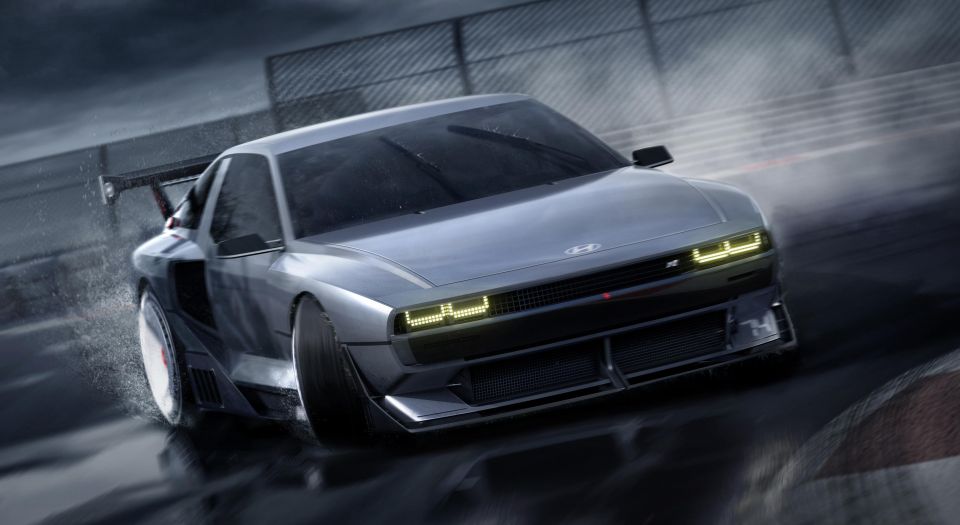
Both of these concepts share Parametric Pixel lighting elements, and follow the N division’s three core pillars of being an “corner rascal, being an “everyday sports car”, and having maximised racetrack capability.
In addition to showing off the two concepts, Hyundai also announced its first electric N car, the Ioniq 5 N, will “hit the global market in 2023”.
“These rolling lab projects are great assets to prepare the N’s electrification vision turning into reality, the Ioniq 5 N next year,” said Hyundai Motor Company vice president of N brand management Till Wartenberg.
More details about the upcoming Hyundai Ioniq 5 N will be revealed at a later date.
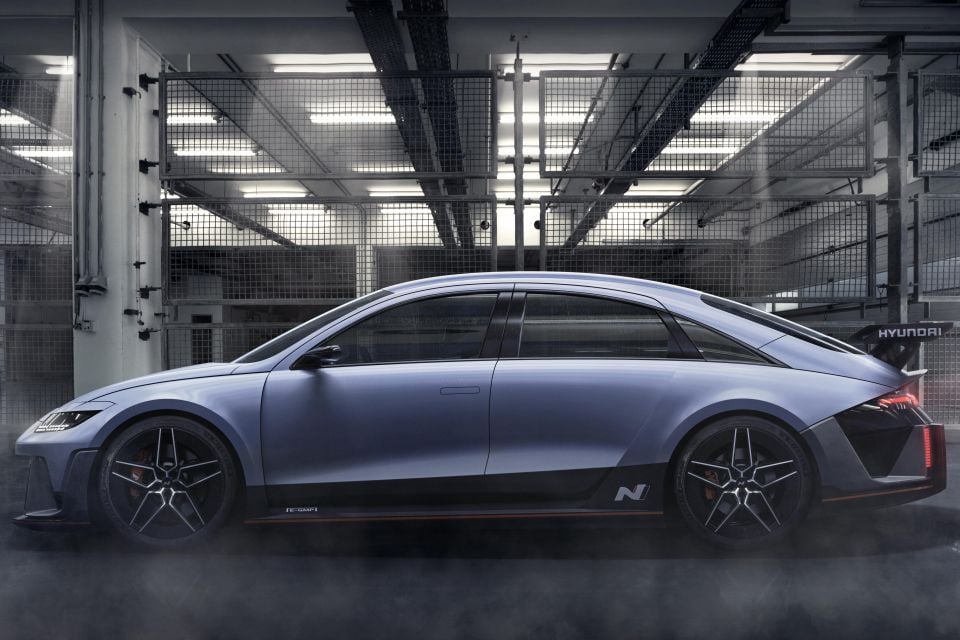
The Hyundai RN22e is the first concept to be built on the modular E-GMP architecture that underpins the Ioniq 5 and Kia EV6, and shows the “possibility of a high-performance EV model in the future”.
In other words, don’t be surprised if the production Ioniq 6 N will look similar to this concept.
The RN22e concept is powered by a dual-electric motor all-wheel drive setup producing total system outputs of 430kW of power and 740Nm of torque.
If these outputs sound familiar, it’s because they’re the same as the high-performance Kia EV6 GT earmarked for an Australian launch late in 2022 or early in 2023.
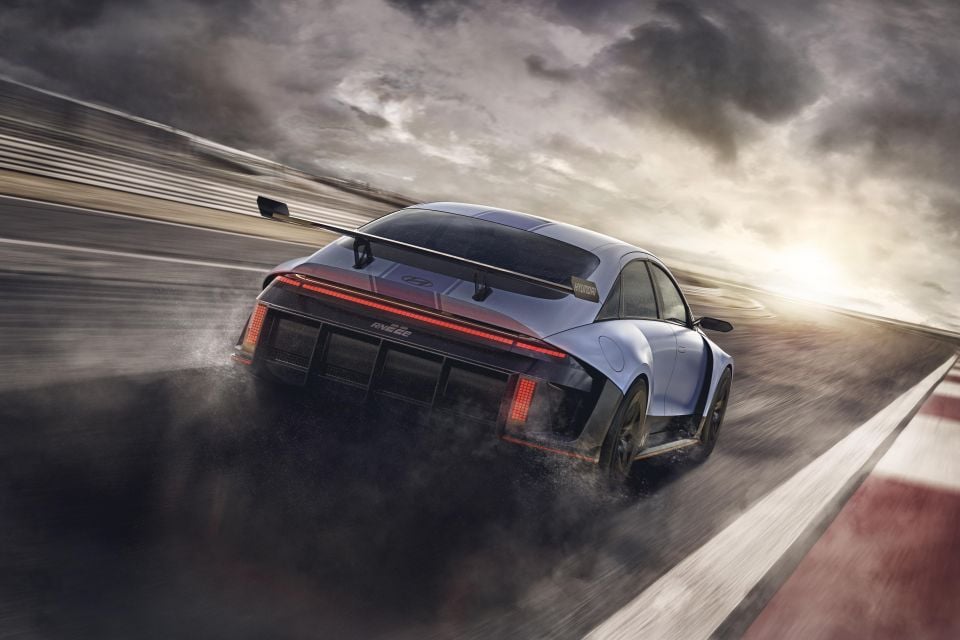
Claimed top speed for the RN22e concept is over 250km/h, which is eerily similar to the 260km/h claimed top speed for the EV6 GT.
As a reference, the current BMW M5 Competition packs 460kW and 750Nm from its 4.4-litre twin-turbo V8 petrol engine, hitting 100km/h from a standstill in a claimed 3.4 seconds on its way to a restricted top speed of 250km/h (305km/h optional).
The RN22e concept is mated to a 77.4kWh battery pack, which is the same as the regular Ioniq 6.
Although Hyundai doesn’t mention the concept’s maximum DC fast-charging speed, it can charge from 10 per cent to 80 per cent in under 18 minutes. That figure is shared with other E-GMP cars, which are capable of up to 350kW.
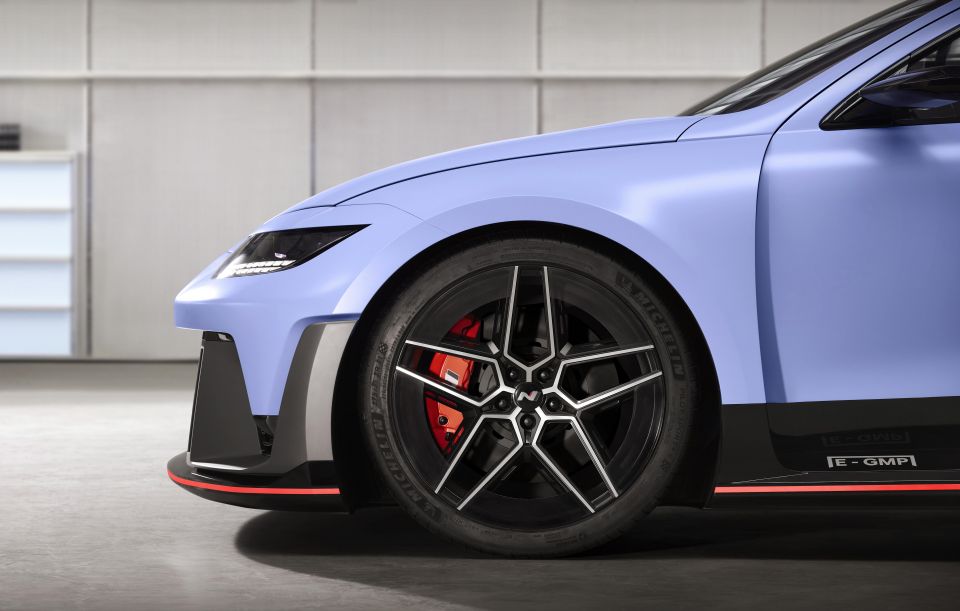
The RN22e concept measures in at 4915mm long, 2023mm wide, and 1479mm tall, with a 2950mm wheelbase.
Although it has the same wheelbase as the Ioniq 6 fastback, the concept is 60mm longer, 143mm wider, and 16mm shorter.
Notable features the RN22e concept has include an electronic limited-slip differential (e-LSD), torque vectoring, and 400mm brake discs with four-piston mono block calipers.
There’s N Sound+ which generates sound from the interior and exterior speakers “for a dynamic driving feel”, and N e-shift which “integrates the vibration and shifting feel with N Sound+”.
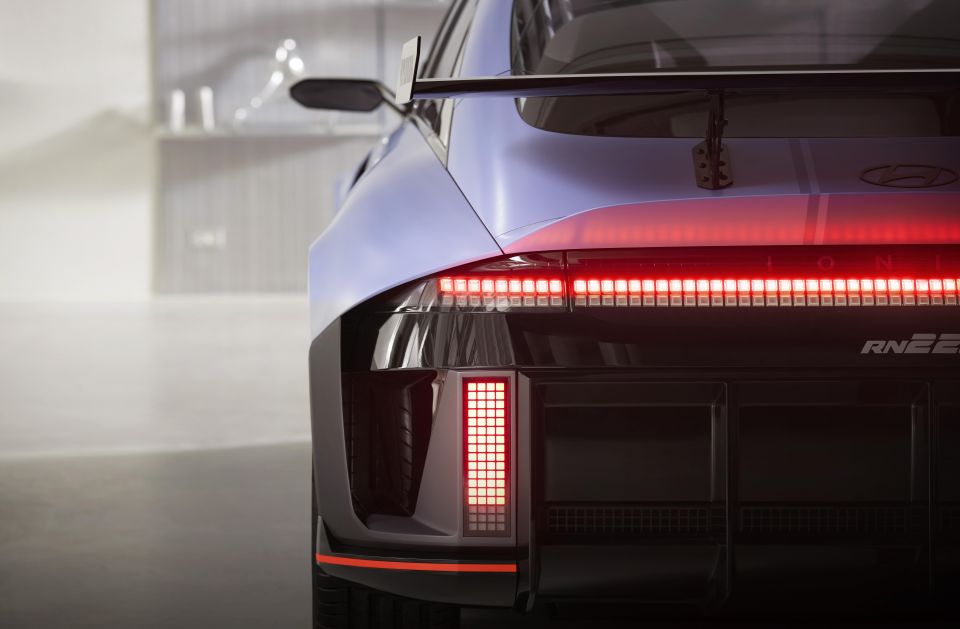
Hyundai plans to use the concept to study how to “deliver dynamic movement with regen-braking that precisely controls yaw and corner attack”.
As mentioned above, the concept’s exterior design is based on the regular Ioniq 6 though it has a number of 3D-printed additions which make it look sportier and motorsports-inspired.
It’s also finished in the N division’s signature Performance Blue paint with a slightly darker blue racing stripe running down the middle of the car.
From the front you can tell it’s is a lot wider than the regular Ioniq 6 thanks to swollen wheel arches. There’s also a low front splitter featuring a wide rectangular air intake with an ‘N’ logo on it.
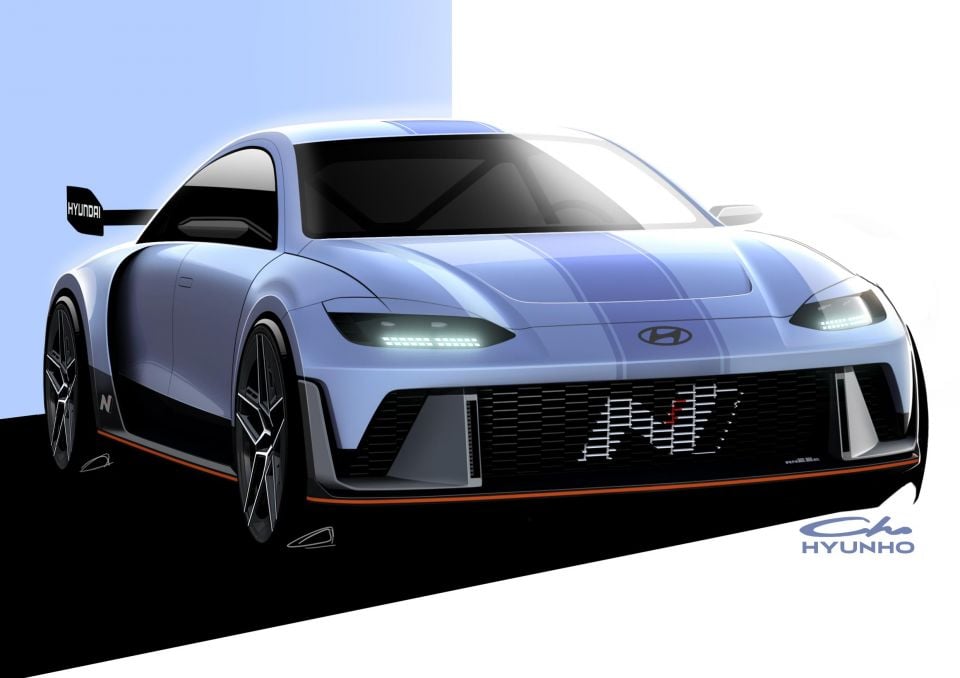
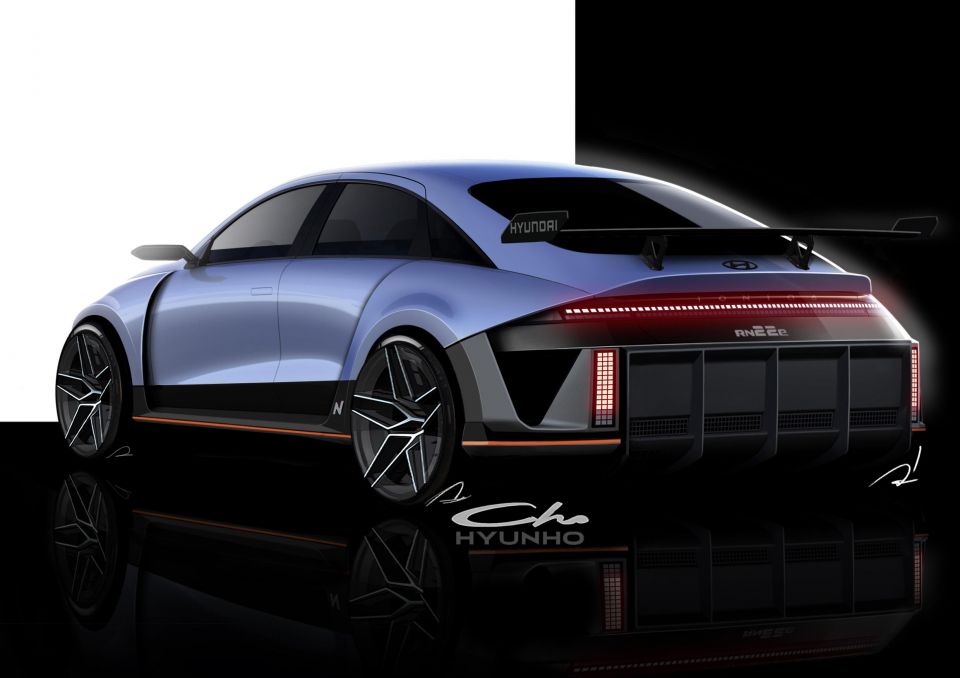
At the back the RN22e retains the Ioniq 6’s rear diffuser for the most part, but makes it sportier, and has a large rear wing instead of the lip spoiler on the regular Ioniq 6.
The RN22e received its name because it is the ‘rolling lab’ concept for the N brand and was developed in 2022 with an electric powertrain.
It follows the RM20e concept which was revealed in 2020, and was a modified all-electric version of Hyundai’s Veloster N TCR racer.
Hyundai first started its Project RM series in 2012 with the intention of developing and connecting high-performance technology from motorsports with future N models.

The Hyundai N Vision 74 is inspired by a number of previous concepts, and is powered by a “high-performance hydrogen fuel cell hybrid” drivetrain.
The concept has dual, rear-mounted electric motors producing over 500kW and over 900Nm, along with a hydrogen fuel stack producing a maximum of 95kW to charge the battery. Top speed is claimed to be over 250km/h.
There’s a 62.4kWhbattery capable of 800V fast-charging, and a 4.2kg hydrogen tank which can be refuelled in five minutes. That’s a much bigger battery than, say, a Toyota Mirai, which combines its 5.6kg hydrogen tank with a 1.2kWh lithium-ion battery.
In essence, the Vision is a battery-electric car with what shapes as a sort of hydrogen range extender.
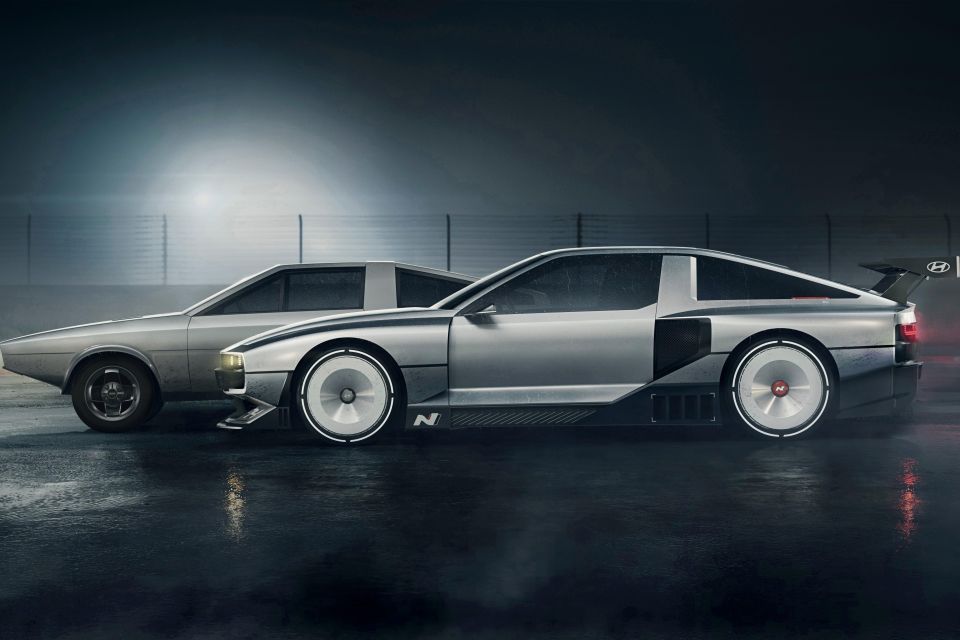
Hyundai claims the N Vision 74 concept’s driving range is over 600km.
This powertrain follows on from the hydrogen unit used in the Hyundai N 2025 Vision Gran Turismo concept.
The N Vision 74 concept measures in at 4952mm long, 1995mm wide, and 1331mm tall, with a 2905mm wheelbase.
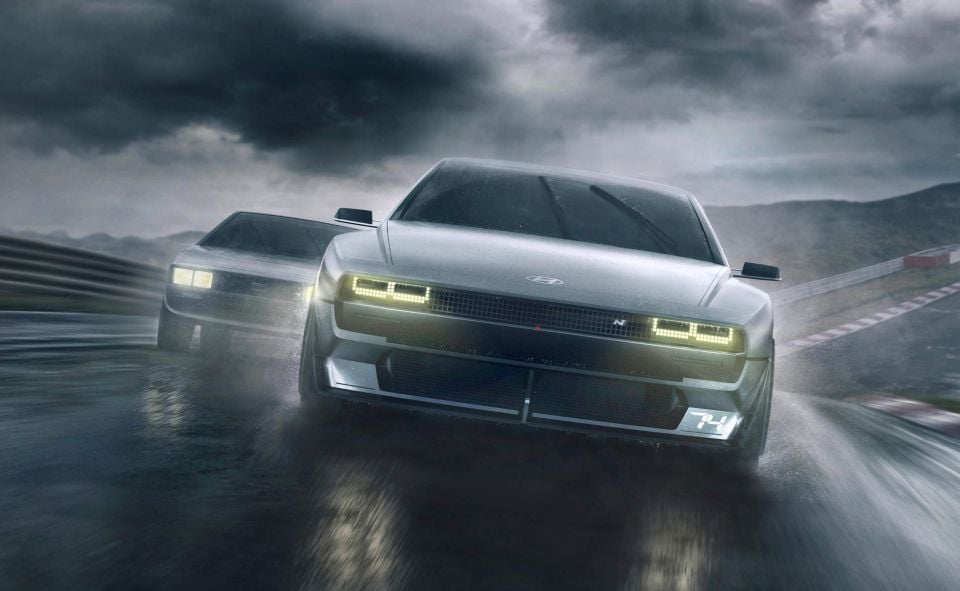
For comparison, this is 85mm longer, 88m wider, and 31mm shorter than the BMW M8 Competition, with a 78mm longer wheelbase.
On the design front, the N Vision 74 is inspired by the original 1974 Hyundai Pony Coupe concept that was designed by Giorgetto Guigiaro.
Hyundai has also recently revealed a restomod of the production Pony with modern details and an all-electric drivetrain.
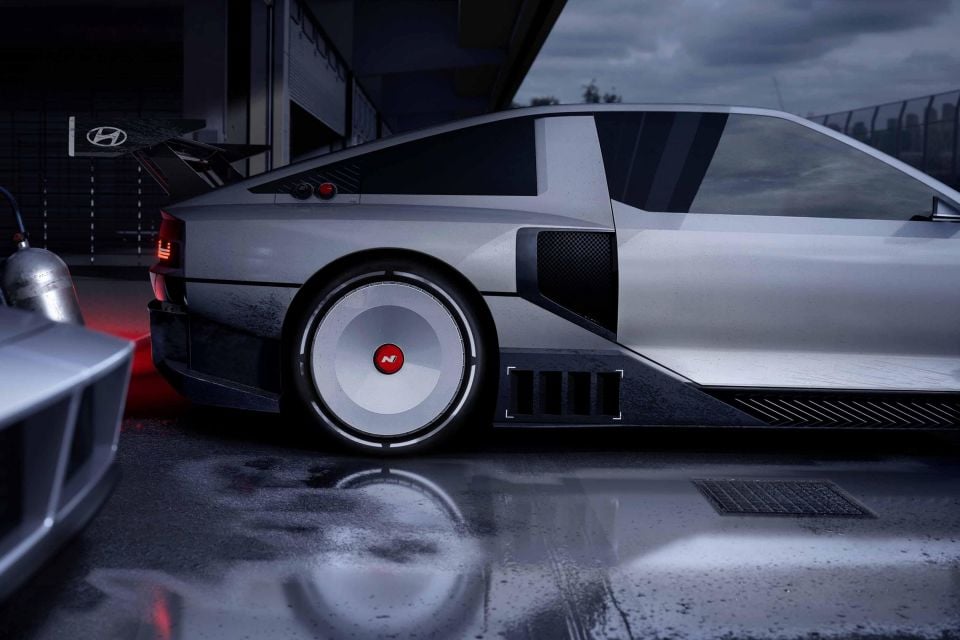
Although the new N Vision 74 concept retains the fundamental silhouette and unique B-pillar of the Pony Coupe concept, it has a number of motorsports-inspired additions such as a low front splitter, swollen wheel arches, retro-looking aero disc wheels, rear diffuser, and a large rear wing.
Inside the concept has a “driver-centric cockpit” which blends heritage and modern design elements. There is a digital instrument cluster and analogue buttons.
It’s unlikely this car will go into production, but the knowledge and technologies from the FCEV powertrain will help to inform future Hyundai N production vehicles.
Click an image to view the full gallery.
Where expert car reviews meet expert car buying – CarExpert gives you trusted advice, personalised service and real savings on your next new car.
Jack Quick is an automotive journalist based in Melbourne. Jack studied journalism and photography at Deakin University in Burwood, and previously represented the university in dance nationally. In his spare time, he loves to pump Charli XCX and play a bit of Grand Theft Auto. He’s also the proud owner of a blue, manual 2020 Suzuki Jimny.


Max Davies
35 Minutes Ago


William Stopford
36 Minutes Ago


Derek Fung
1 Hour Ago


Max Davies
9 Hours Ago


William Stopford
1 Day Ago


Ben Zachariah
1 Day Ago